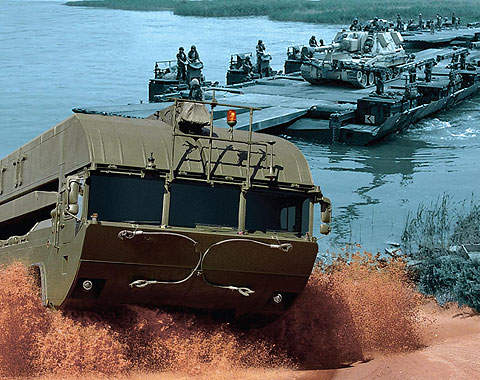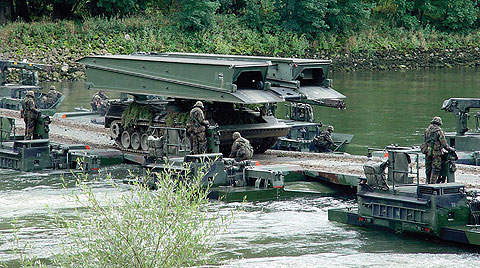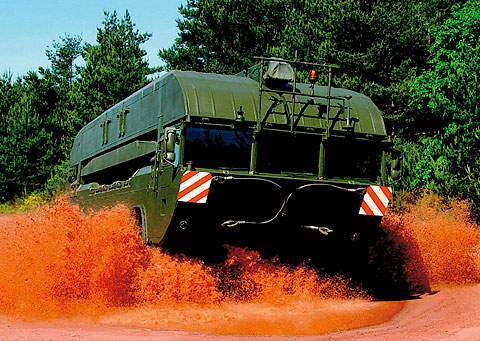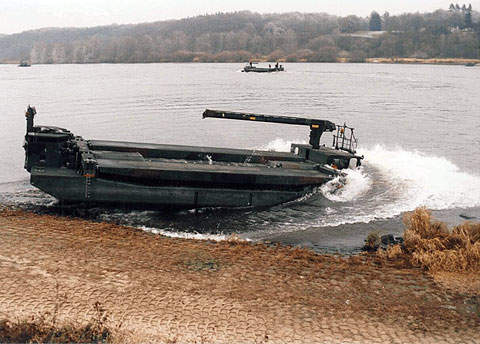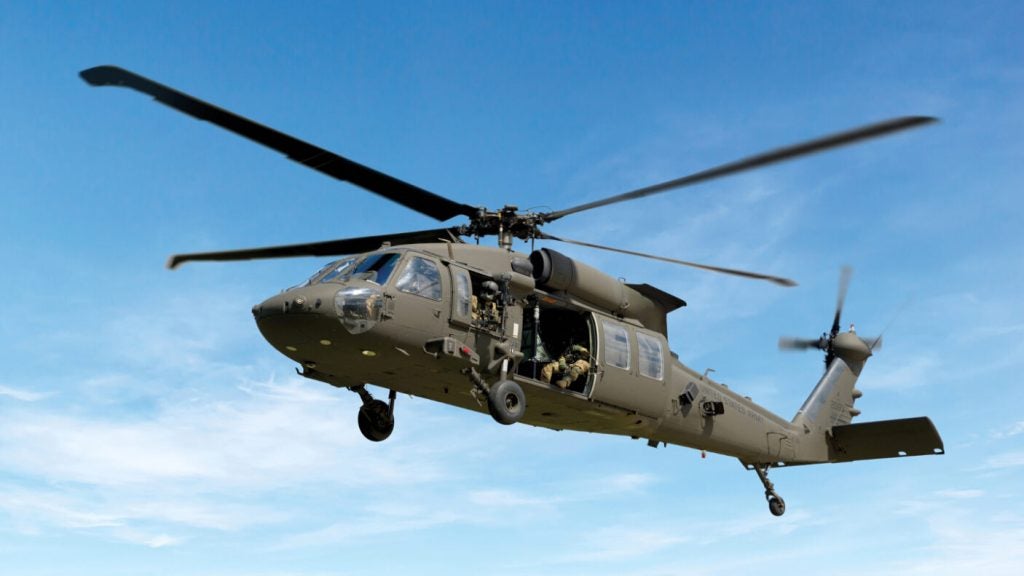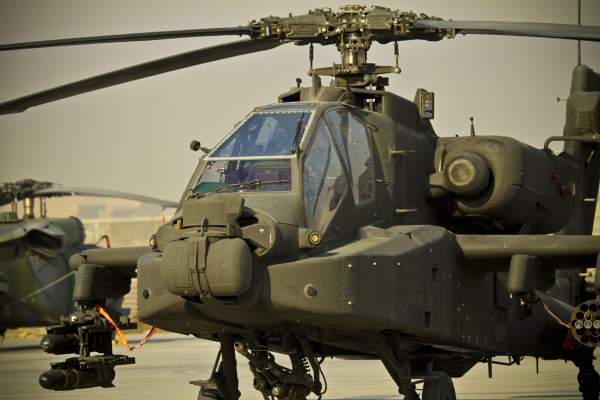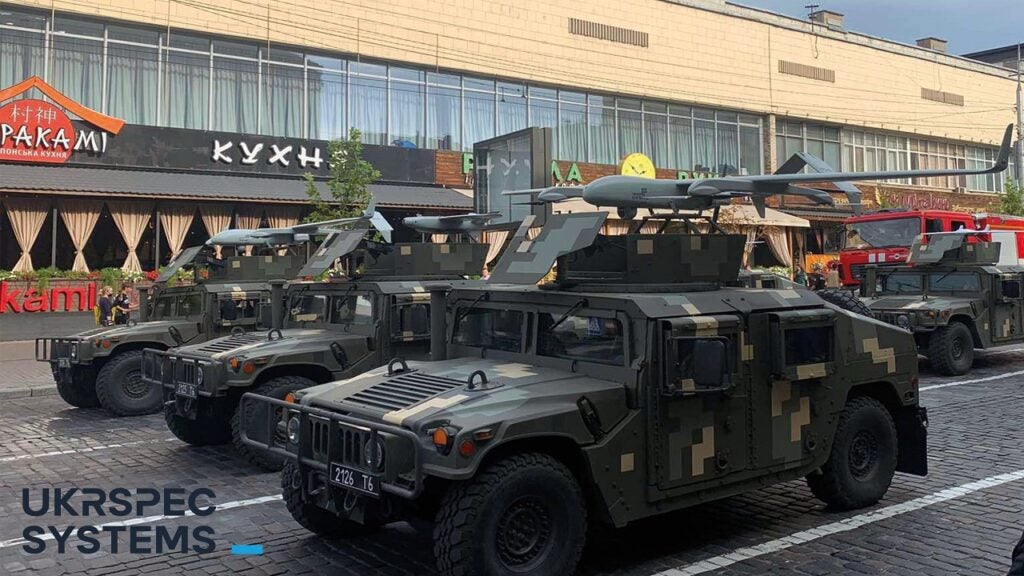The M3 Amphibious Bridging and Ferrying System – also known as the M3 Amphibious Rig – is designed to ferry tanks and other vehicles across bodies of water.
It functions as a four-wheeled vehicle on roads and propels itself in water using two large aluminium pontoons that create buoyancy. When linked together, these pontoons form a bridge capable of supporting heavy battle tanks.
The M3 was unveiled in 1992 by Eisenwerk Kaiserslautern (EWK) – now General Dynamics European Land Systems, Germany. The UK and German armies ordered the first batch of 64 vehicles in 1994. It entered into service in 1996, replacing EWK’s M2 amphibious rig, which was in service for more than 25 years. The armies of the People’s Republic of China and Singapore operate an upgraded version of the M3, called the M3G Military Float Bridge/Raft.
M3 amphibious rig development
The M3 rig was developed between 1982 and 1992, surpassing the M2 in terms of cross-country and marine manoeuvrability, construction time and loading capacity. The vehicle also requires fewer crew (three rather than four), has an enhanced automation system and provides a quicker mission-readiness than its predecessors.
Testing was carried out in arctic, central European and tropical climate conditions, and included civil defence operations, exercises and combat operations. They proved the rig was successful as both a raft and a float bridge.
M3 amphibious bridging system features
A single two-bay M3 is capable of ferrying a Class 70 tracked vehicle – two M2s were needed to do the same, and even then they needed additional buoyancy bags.
As well as its role as a ferry, several M3s can be coupled together to created a heavy-load bridge: 24 crew can construct a 100m bridge from eight vehicles in approximately 15 minutes.
The pontoons can be deployed on the move, in or out of the water, and without the need for on-site preparation first. The M3 can be controlled from within the cab while it is in the water, and control automation reduces the crew requirement. On land, four-wheel steering gives the rig a 24m turning diameter.
The M3G version of the vehicle also has an armoured cabin, NBC (nuclear, biological and chemical) protection, an air-conditioning system and a special tropical climate kit.
Optional equipment for the vehicle includes computer-based training, maintainer and diagnostic systems, a light-armoured and NBC-protected driver cabin, tropical and winter climate kits, single-raft control, an automated fire control and extinguishing system, a radio and intercom system, and a rear anchor.
Land mobility
The M3 is a four-wheel drive, four-wheel steering vehicle with a six-speed automatic gearbox. It has differential and longitudinal locks, retractable axles and a tyre-pressure adjusting system. It is powered by a 298kW Euro III standard diesel engine, and has a maximum road speed of 80km/h and a 60% climbing capability.
Marine mobility
Two water pump jets provide 360° movement in water. The M3 is operational in water currents of about 3.5m/s (11.5ft/s) and can manoeuvre at depths of up to 1.05m. The speed of the vehicle in water is about 9km/h with full load and 14km/h without.

